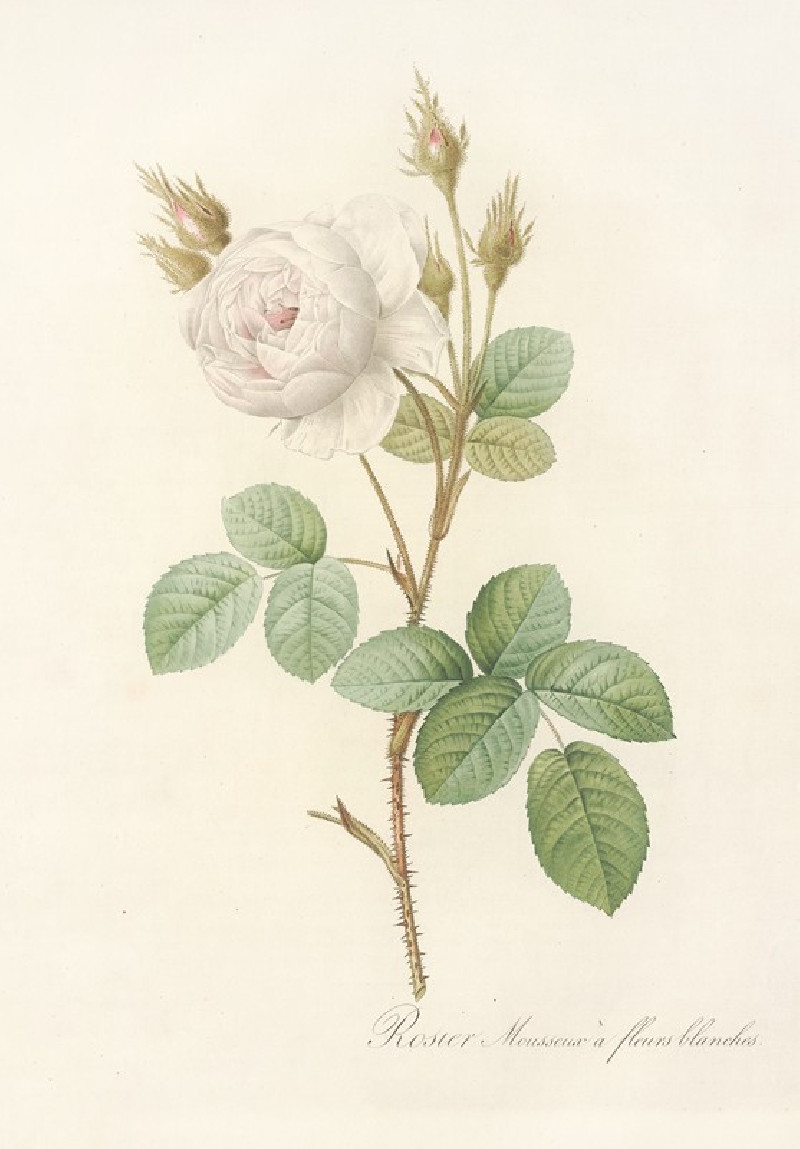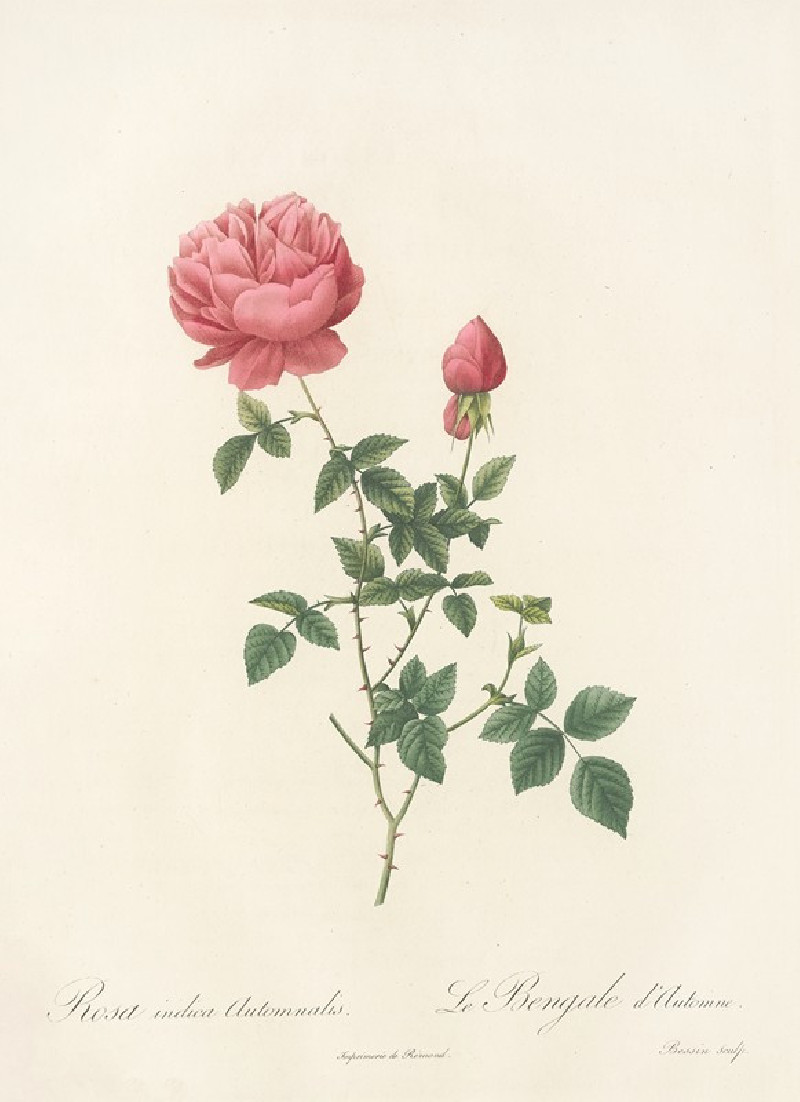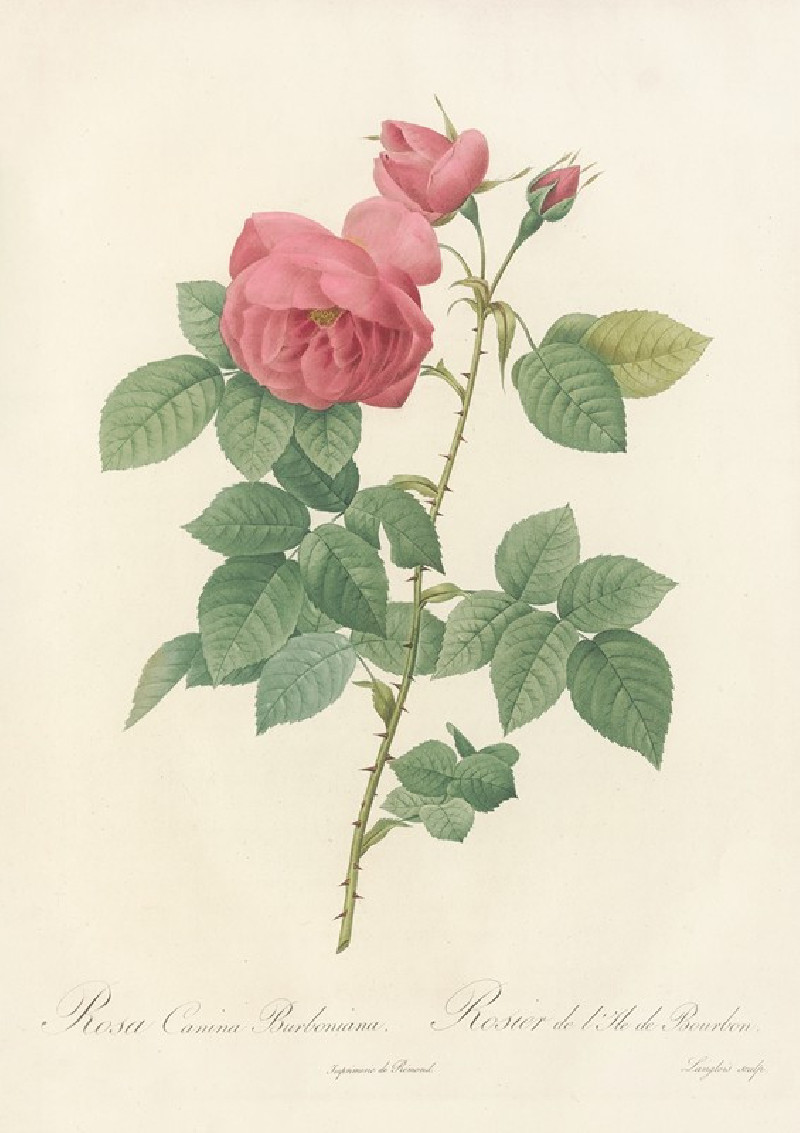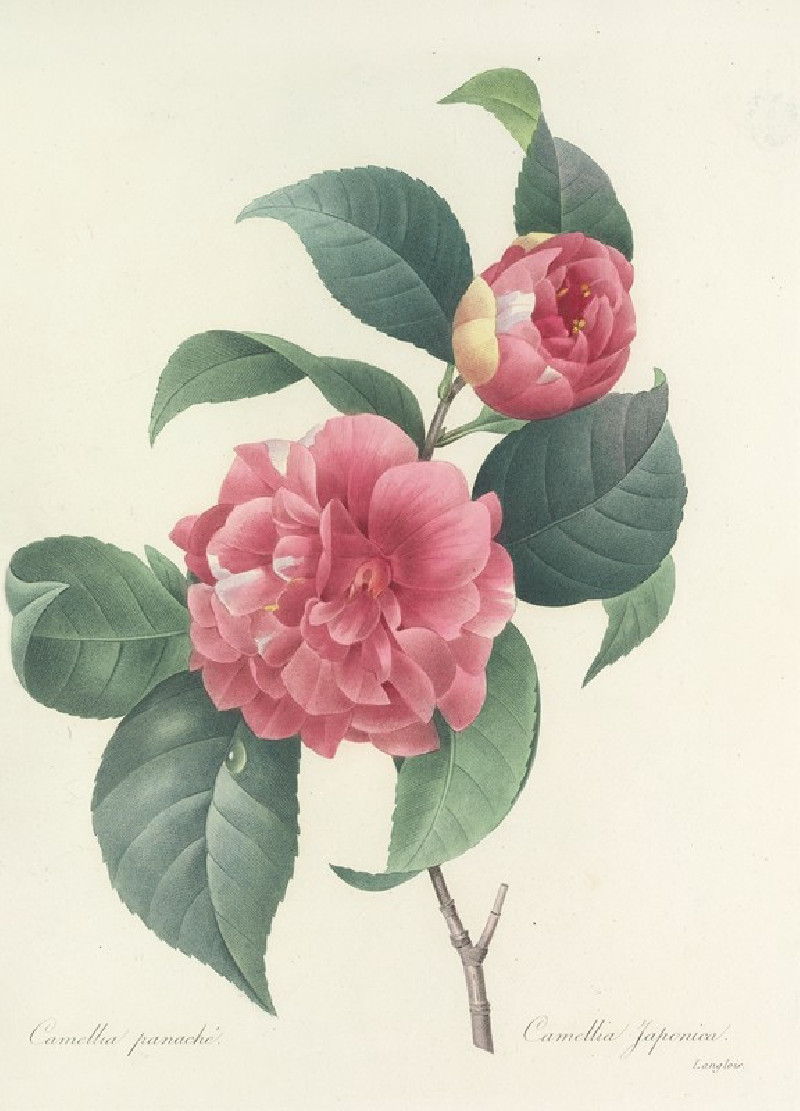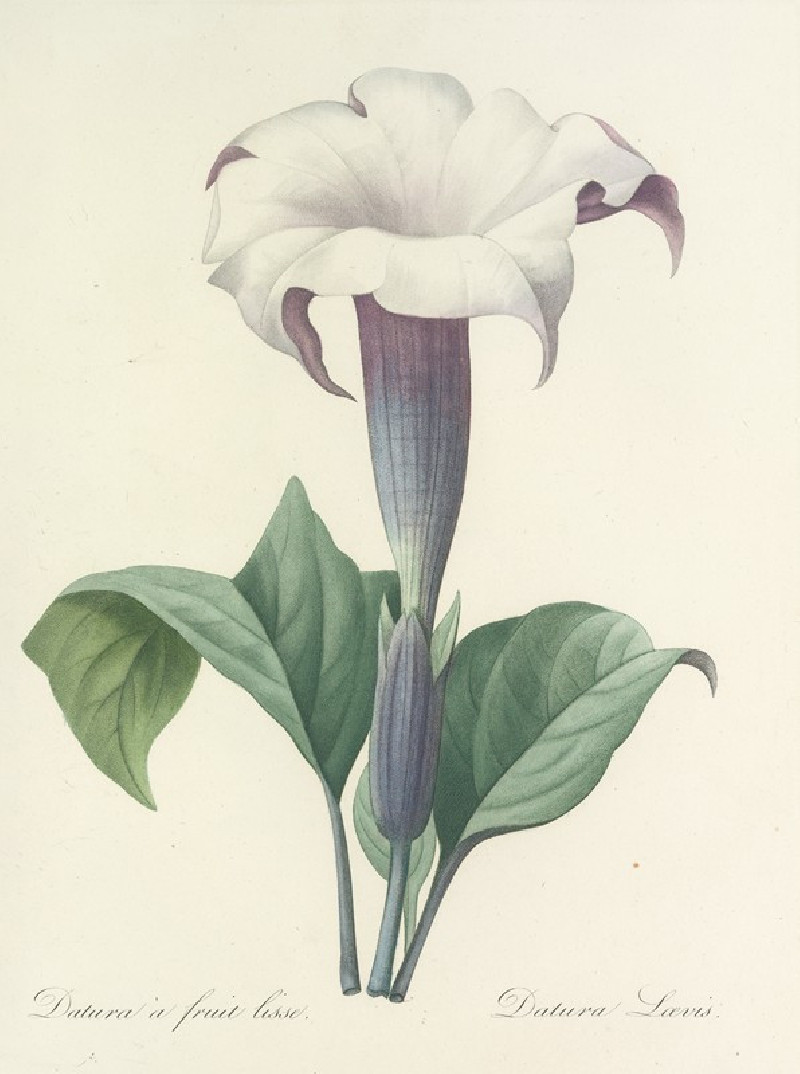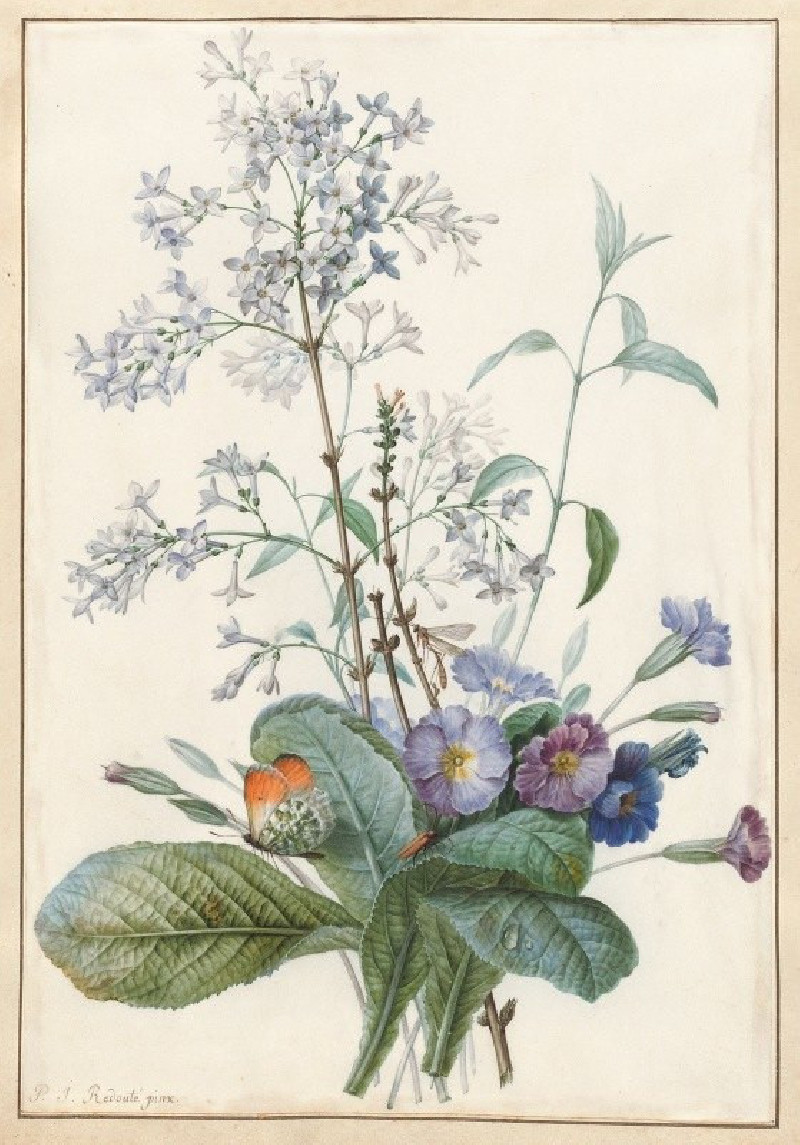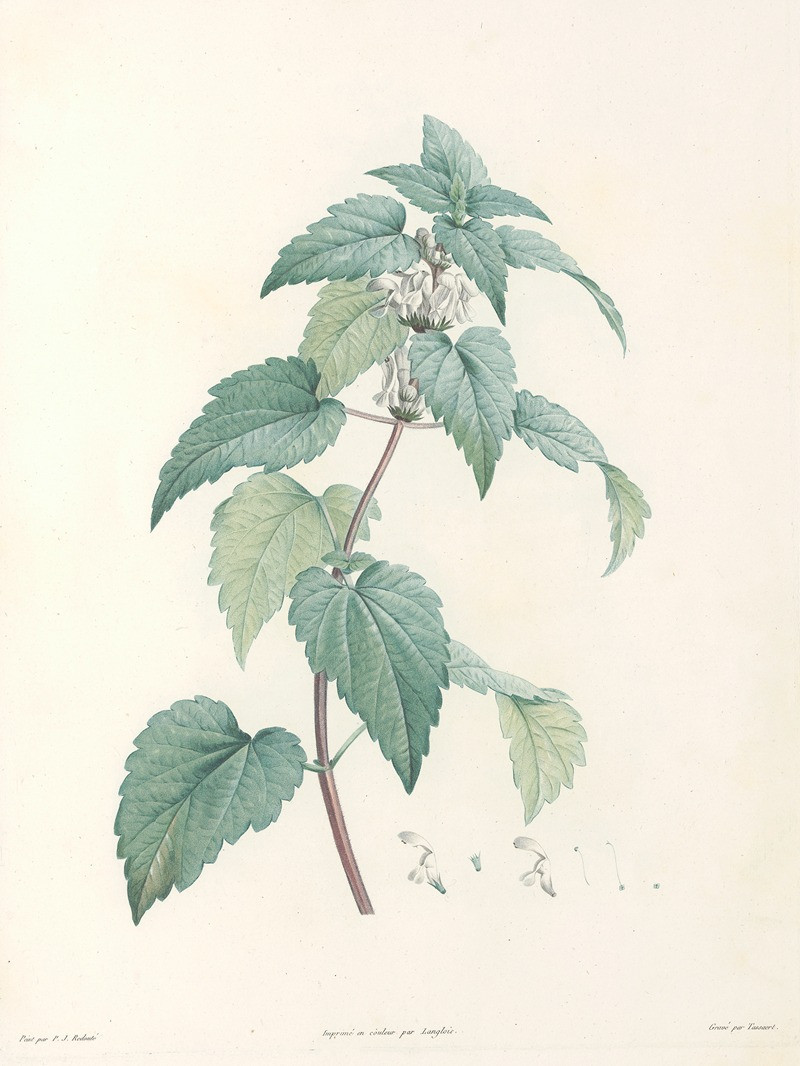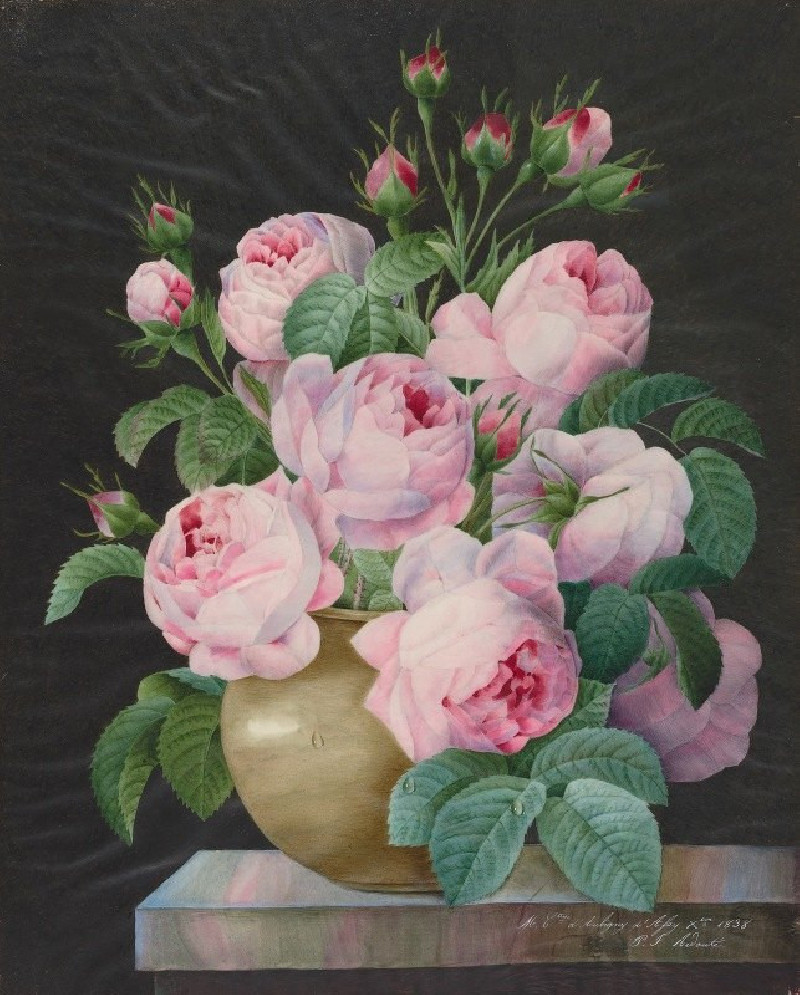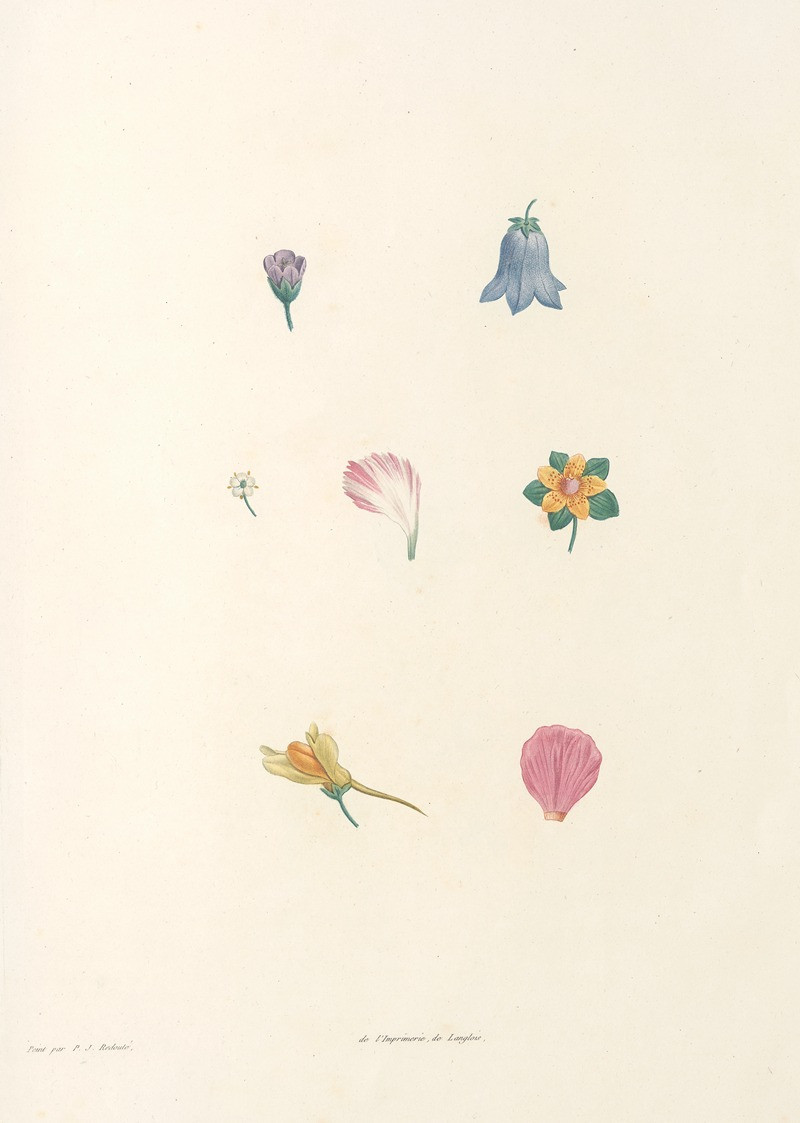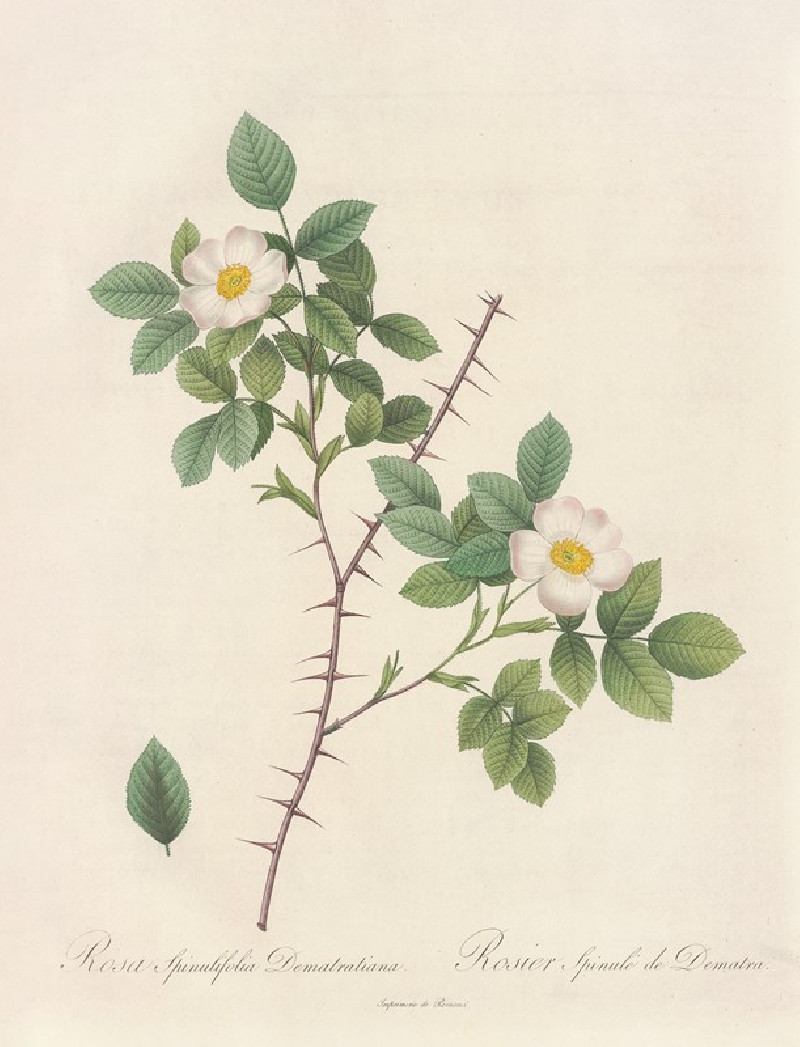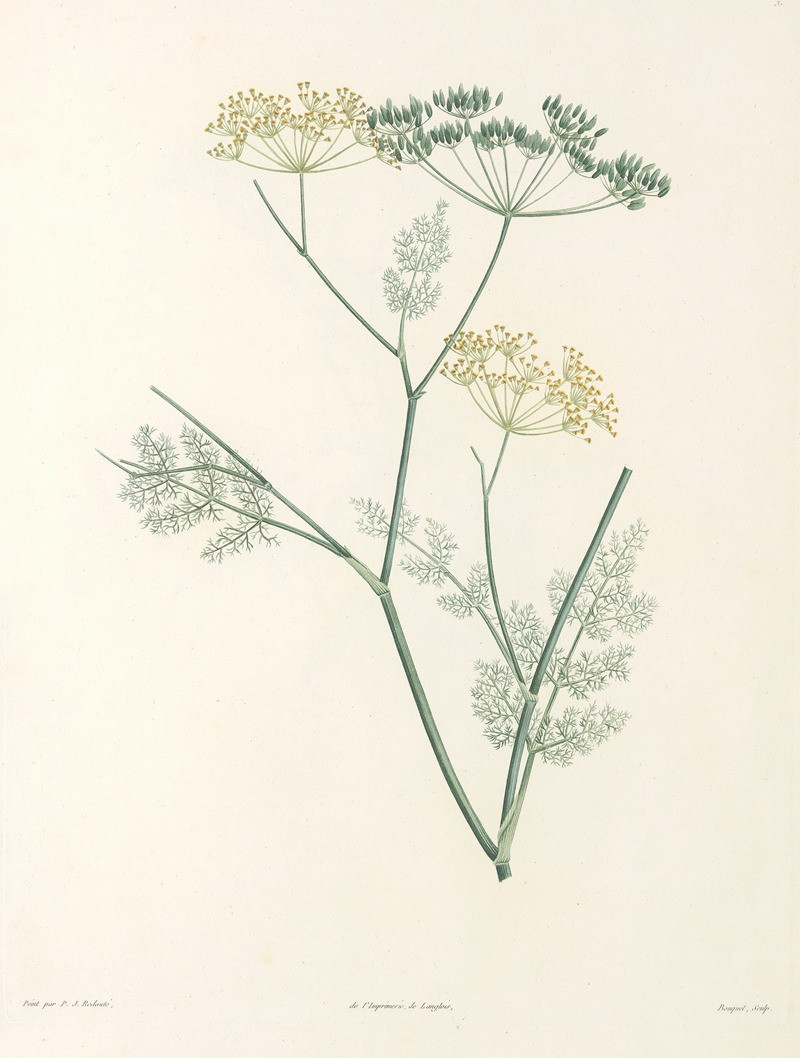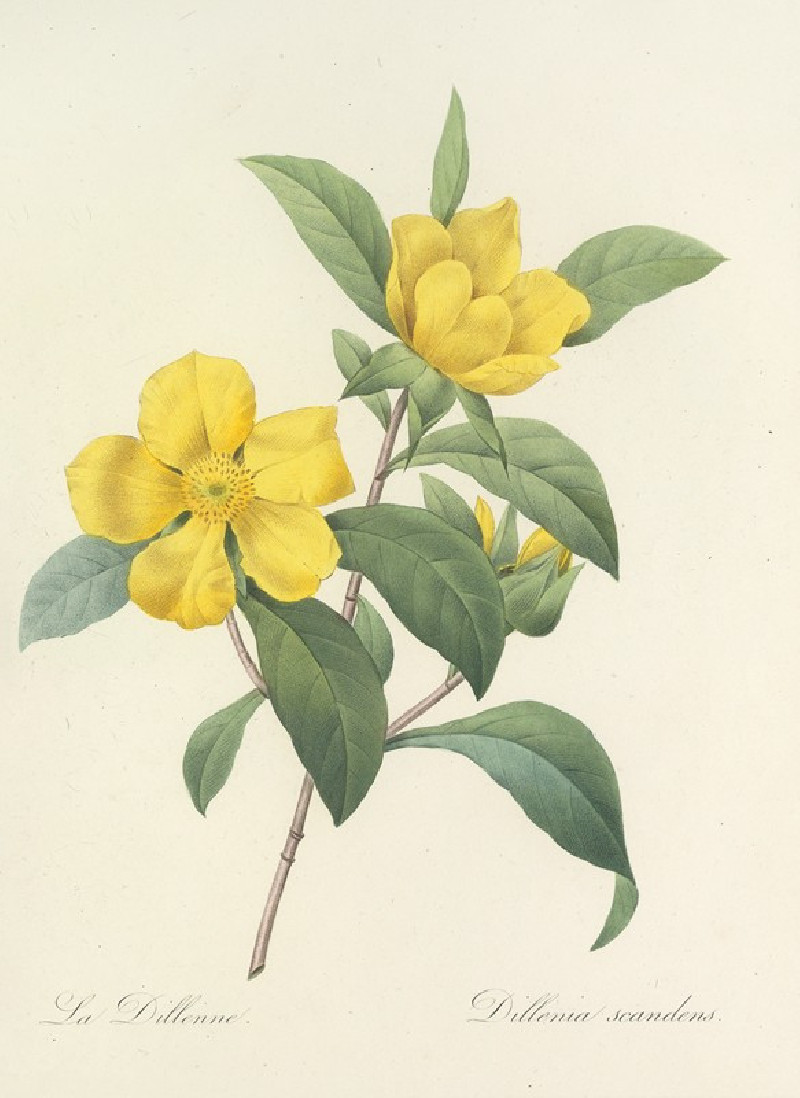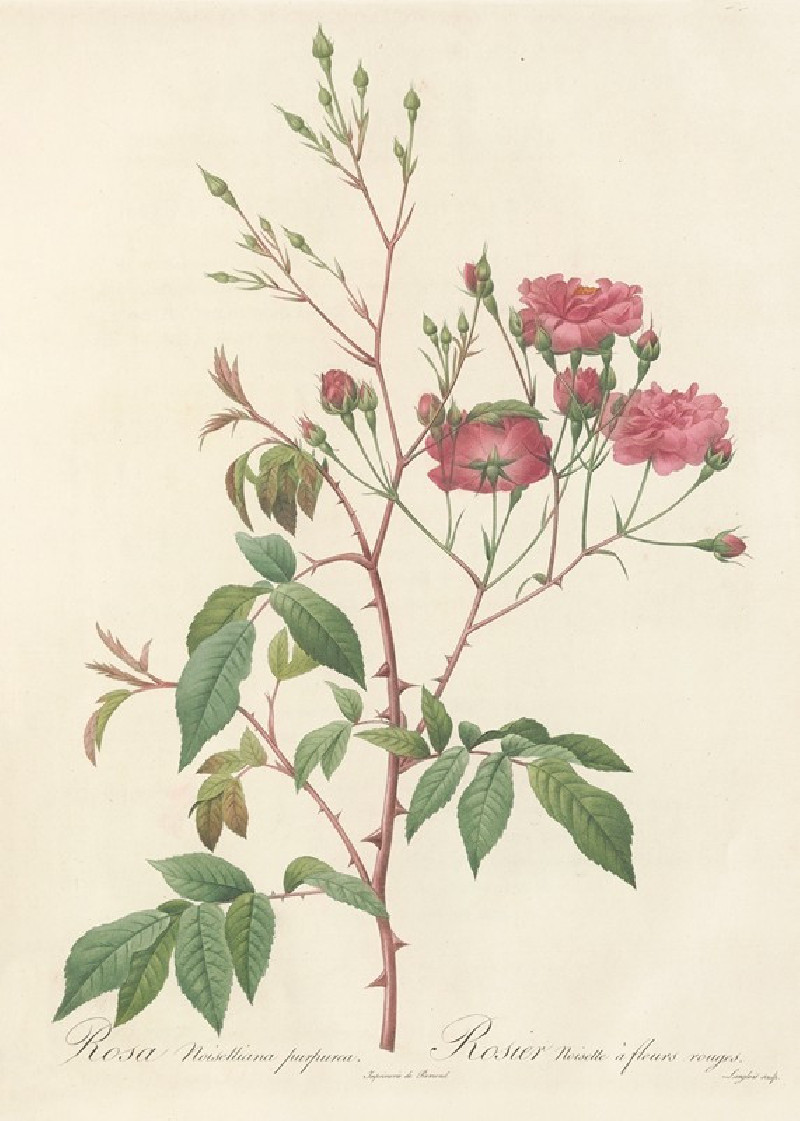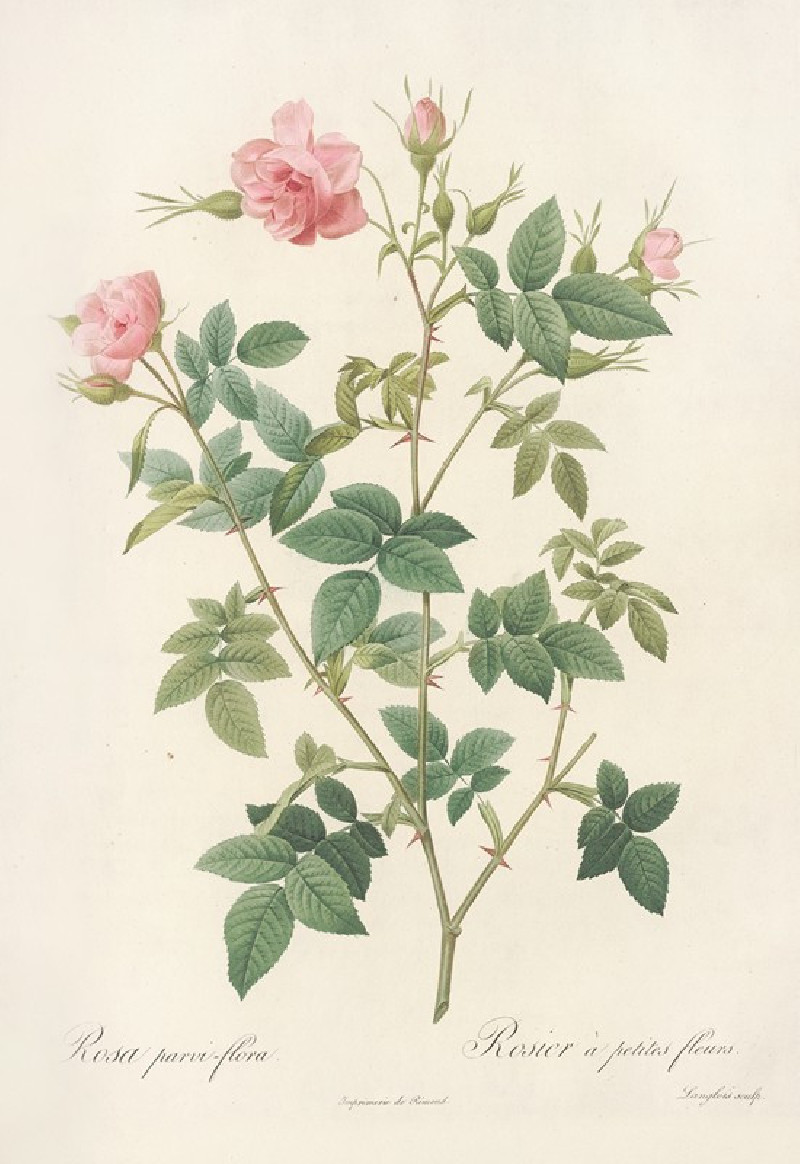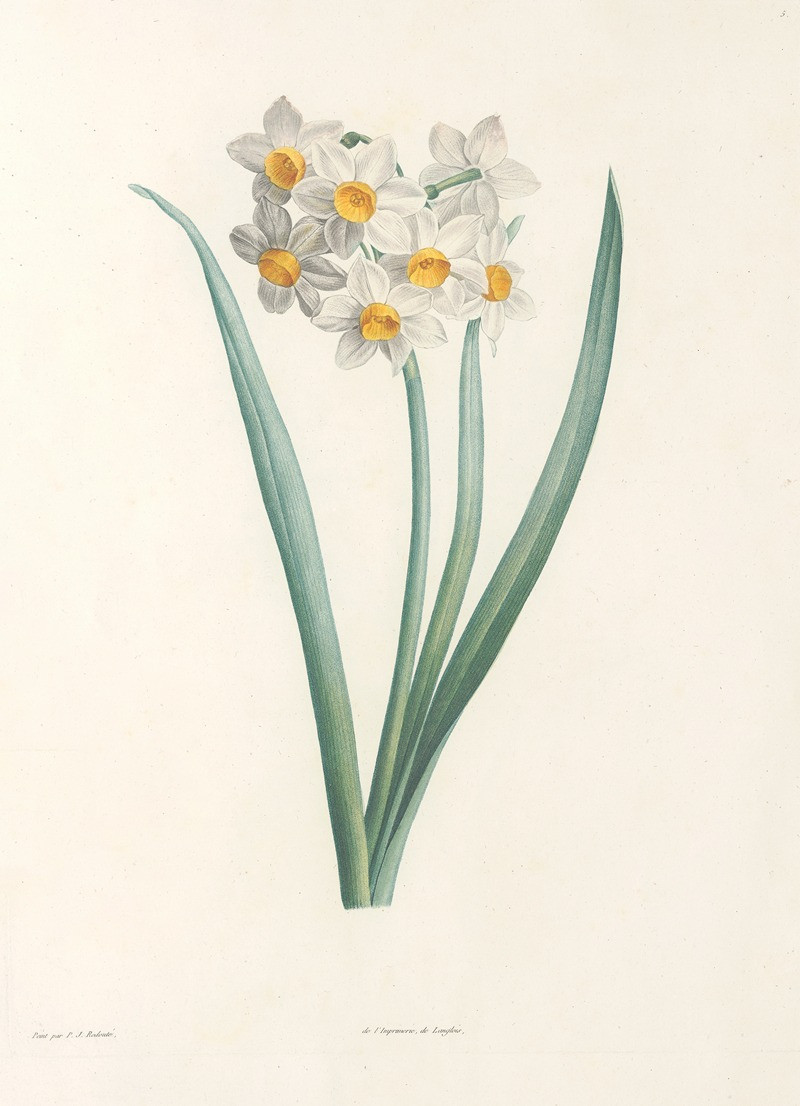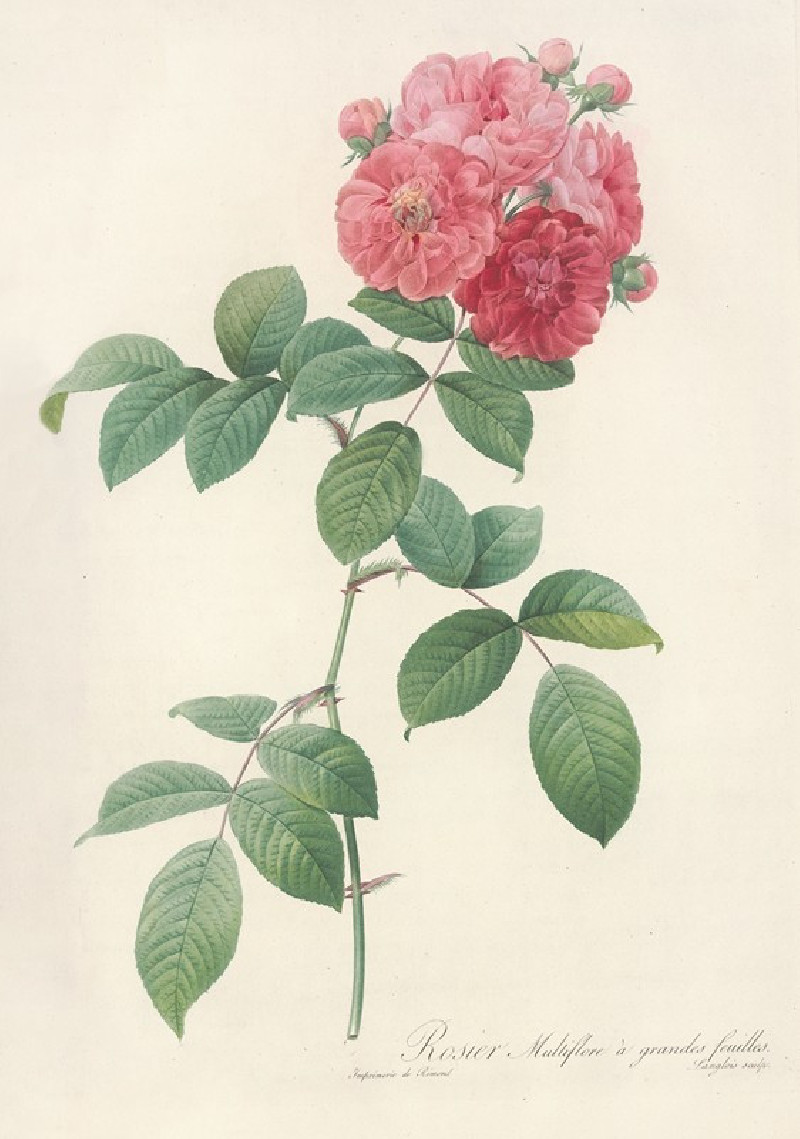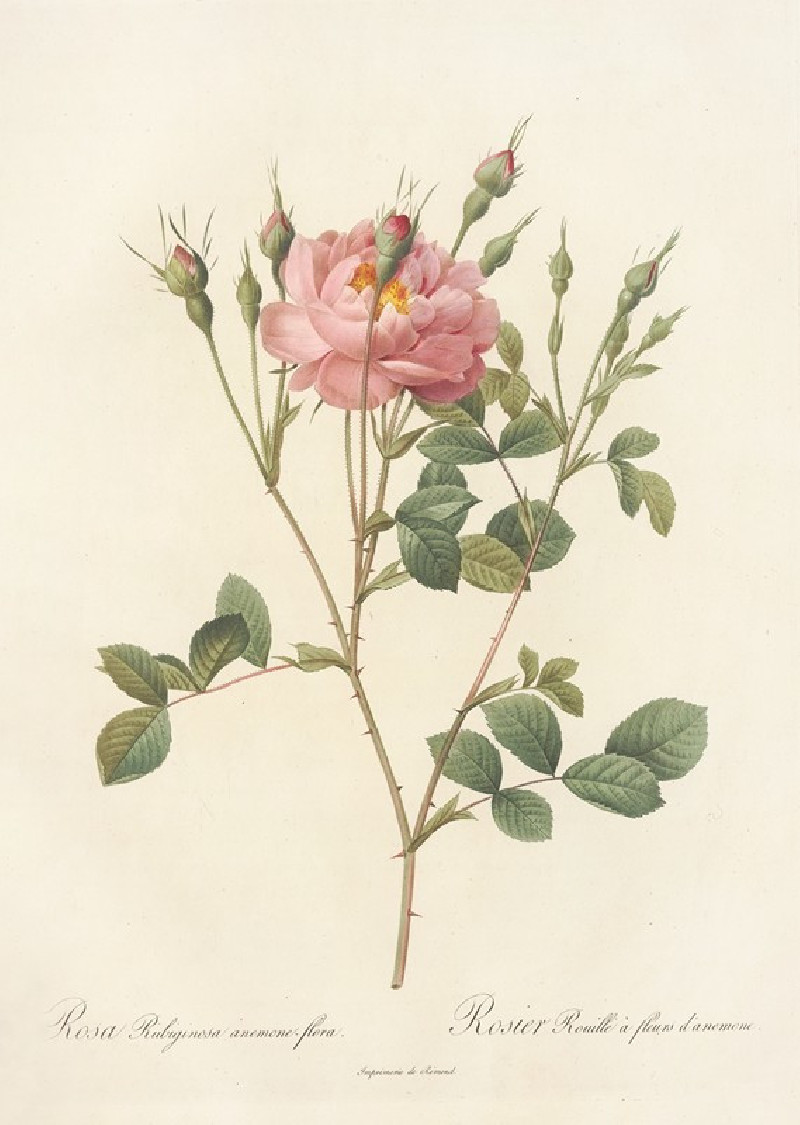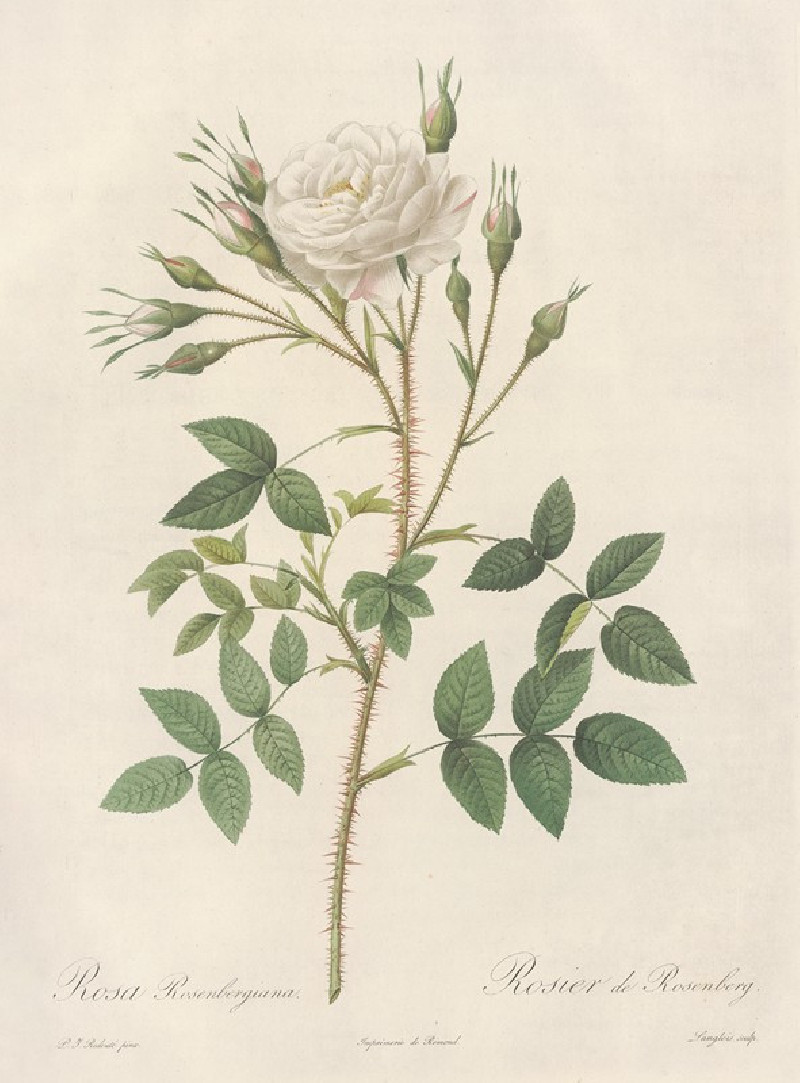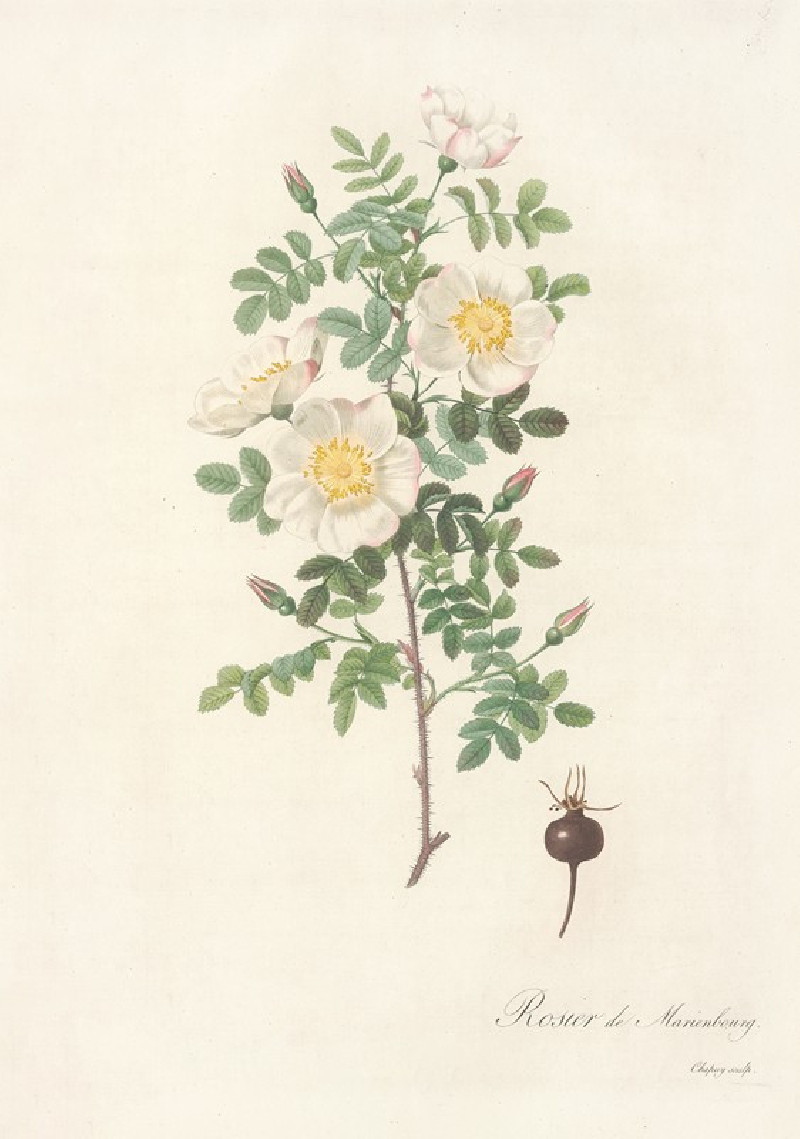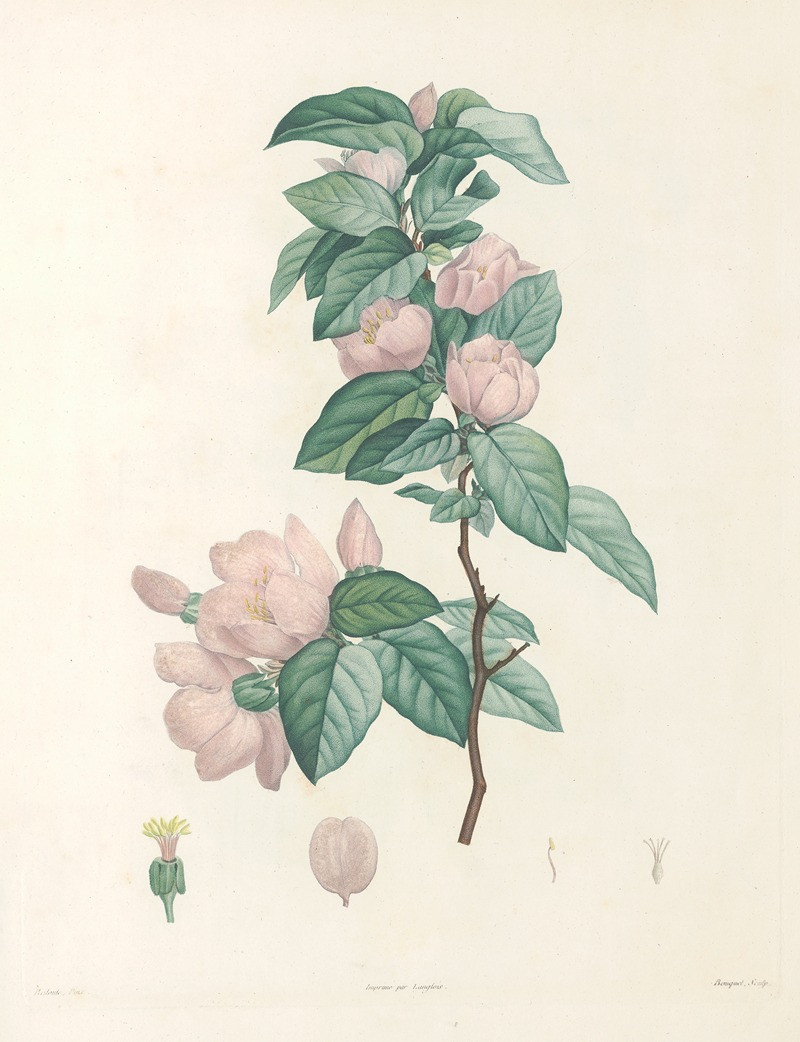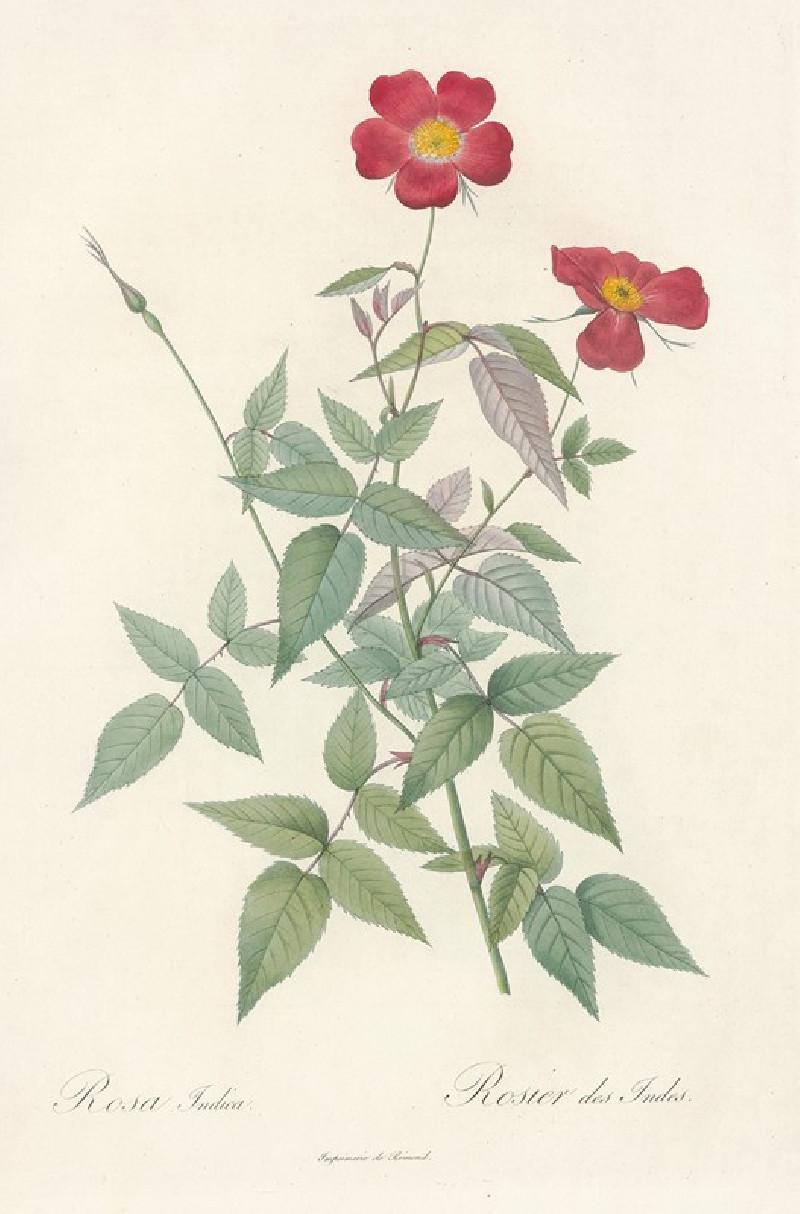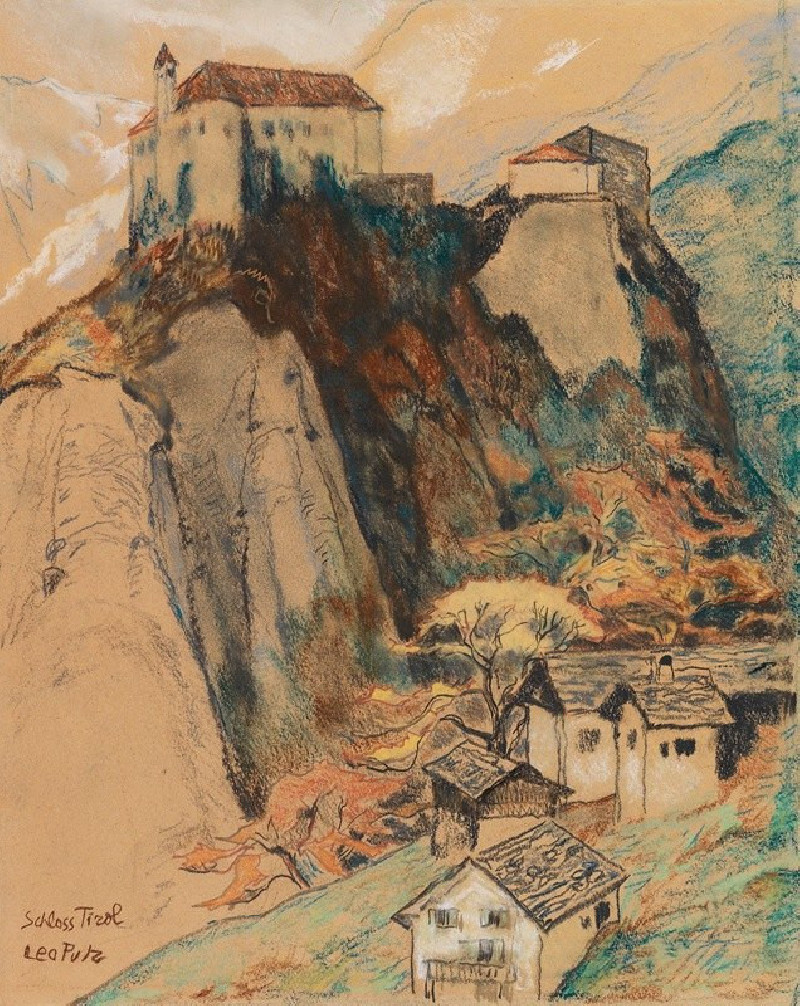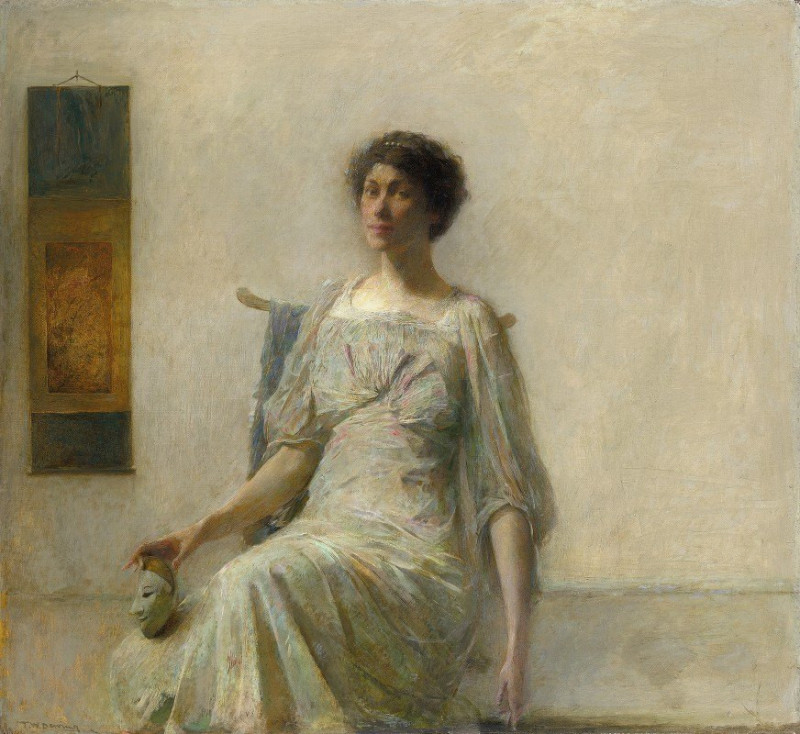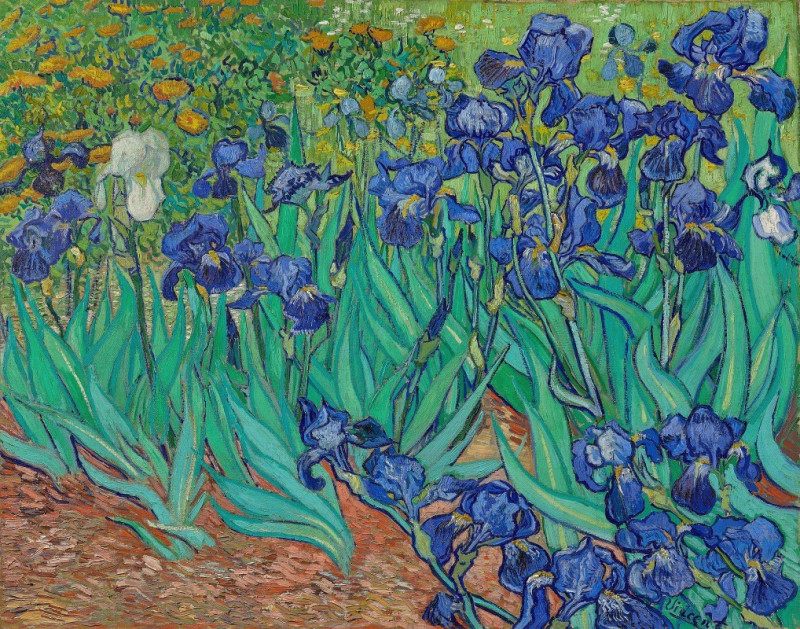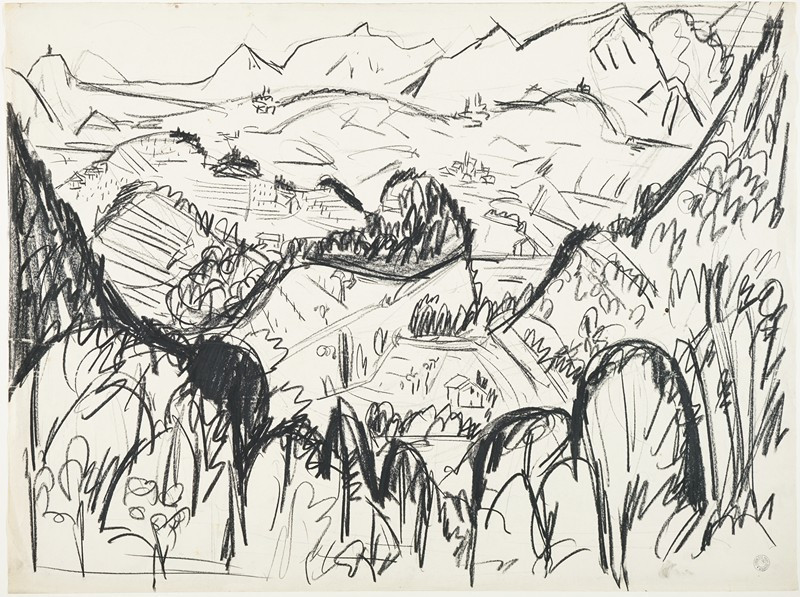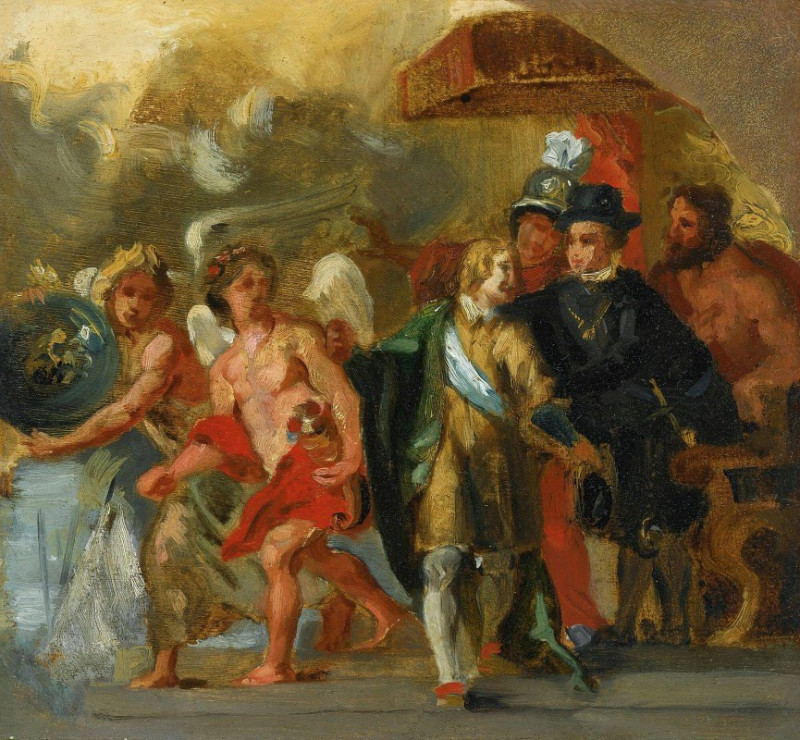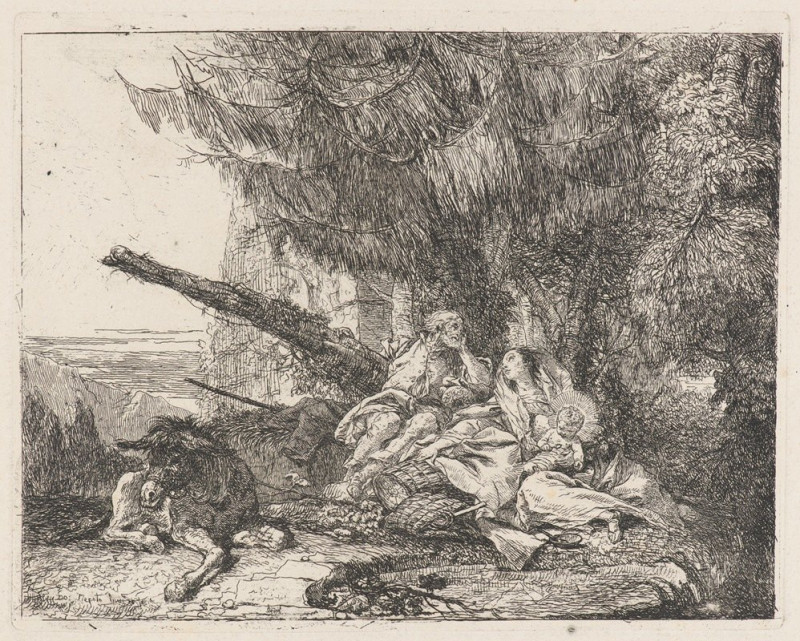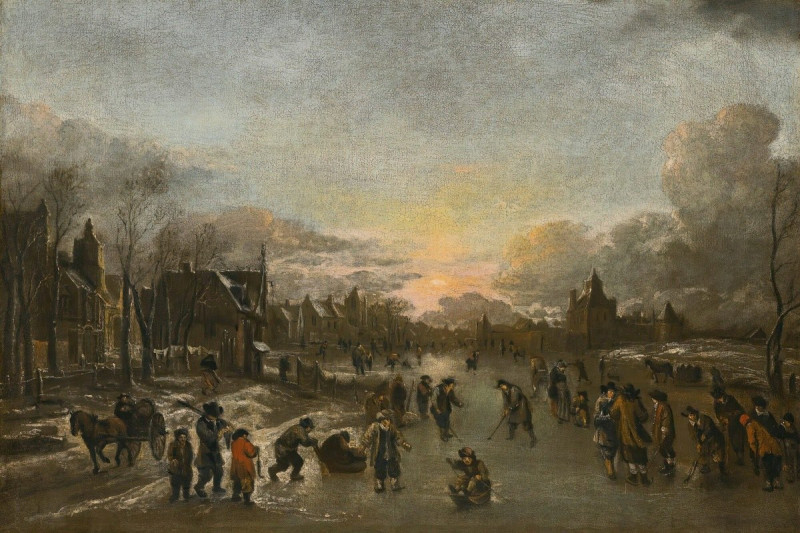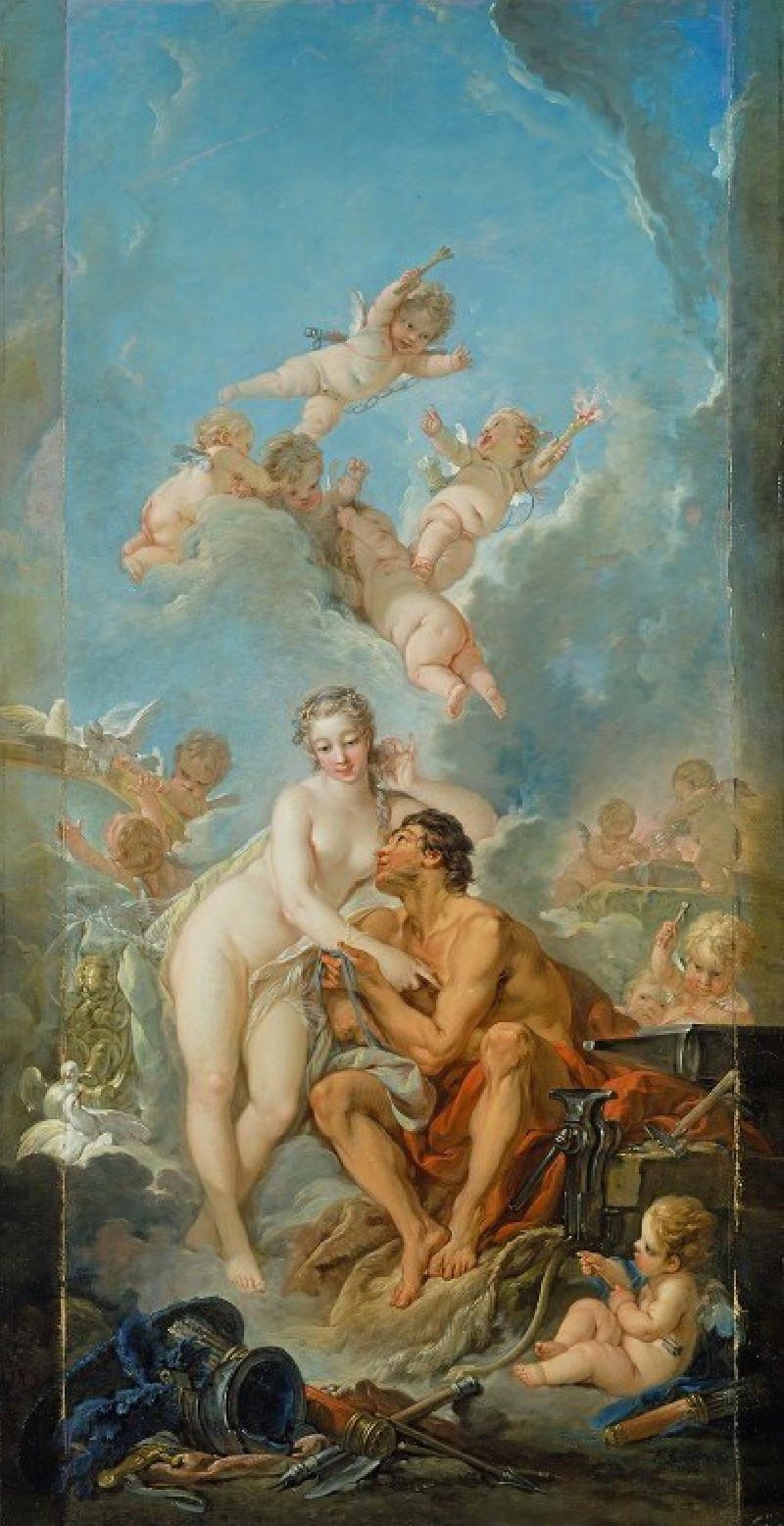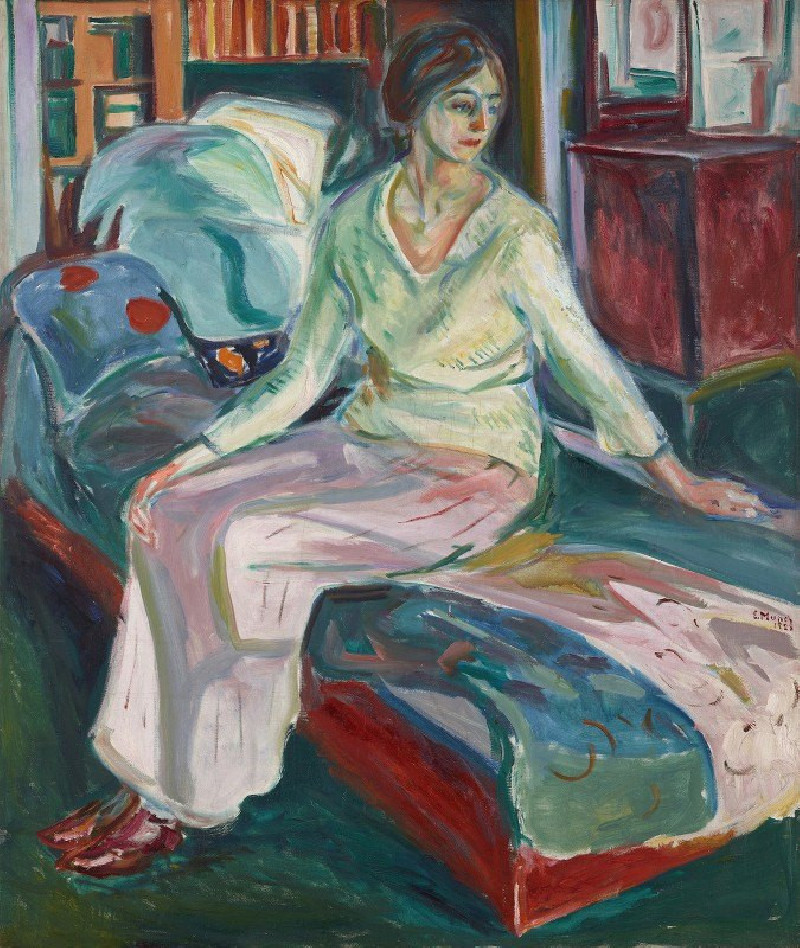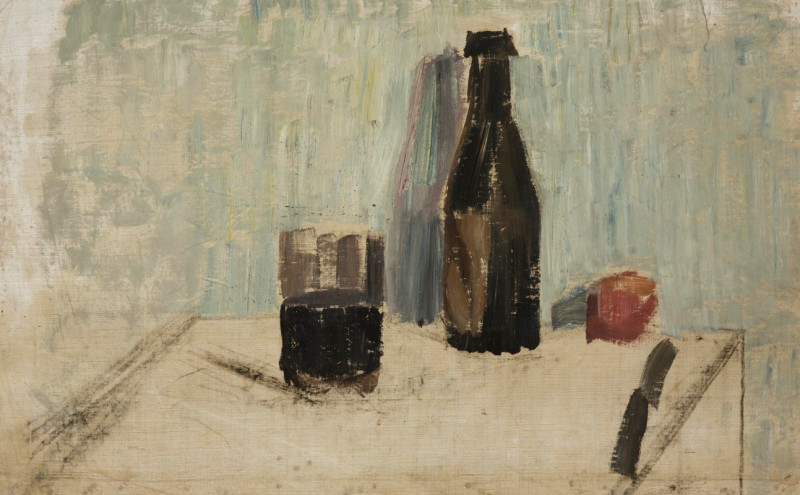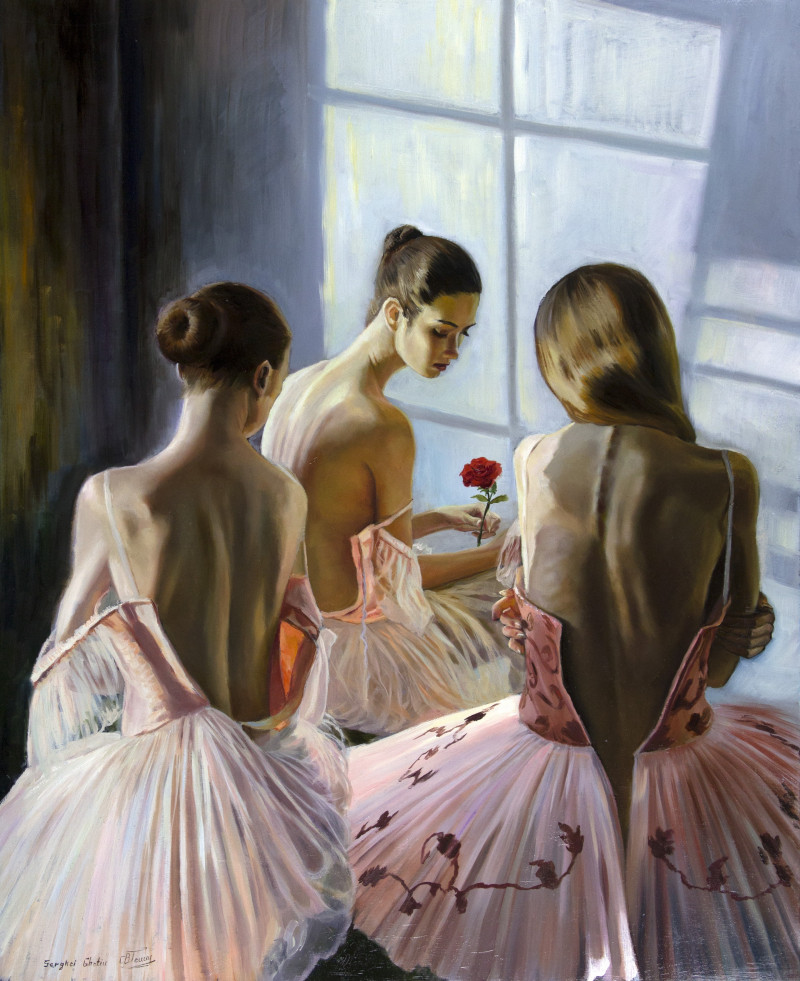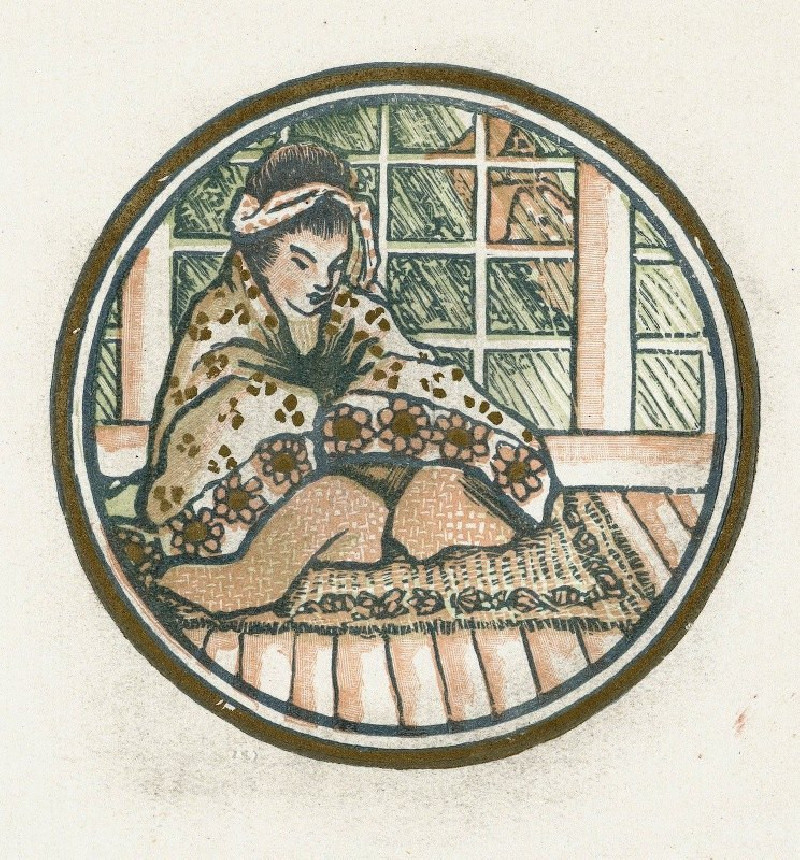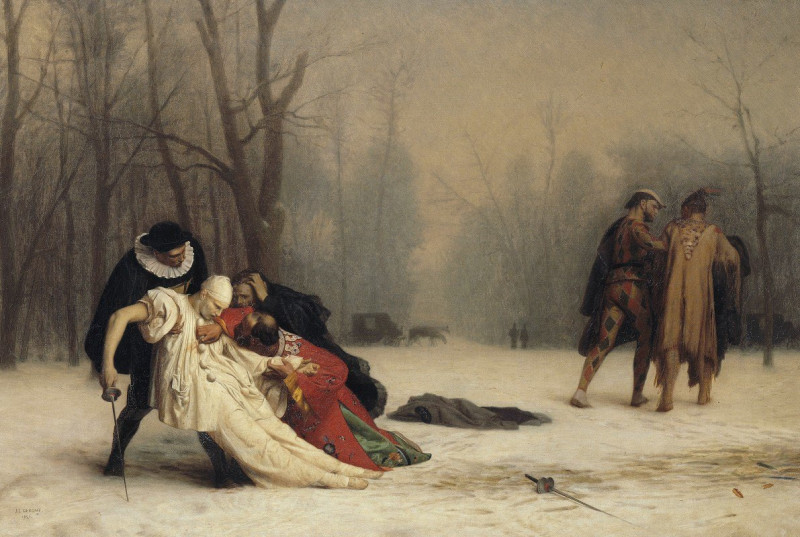Rosa Muscosa Alba (1817 - 1824)
Technique: Giclée quality print
Recommended by our customers
More about this artwork
In the exquisite botanical illustration "Rosa Muscosa Alba" by Pierre Joseph Redouté, a masterful depiction of the white moss rose unfolds with stunning detail and delicacy. Created between 1817 and 1824, this artwork exhibits Redouté's unparalleled ability to capture the beauty and intricacies of nature.The painting features a fully bloomed rose at the center, its petals softly unfurling in shades of pale pink and white. The bloom is supported by a meticulously detailed stem, complete with sharp thorns and fine hairs, characteristic of the moss rose. Surrounding leaves in varying shades of green display a realistic texture and vein patterns, enhancing the overall lifelike appearance of the plant. Several buds in different stages of growth suggest the ongoing life cycle of the rose, each covered with the fine moss-like growth that gives this rose variety its name.Redouté's work not only showcases his artistic skill but also serves as a scientific record, capturing the unique characteristics of the Rosa muscosa alba with a botanist’s precision. This painting is a testament to the era's fascination with natural history and the celebration of floral diversity through the lens of art.
Delivery
Returns
Pierre-Joseph Redouté, was a painter and botanist from Belgium, known for his watercolours of roses, lilies and other flowers at Malmaison, many of which were published as large, color stipple engravings. He was nicknamed "the Raphael of flowers" and has been called the greatest botanical illustrator of all time.

